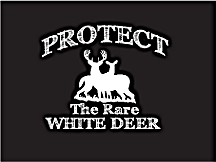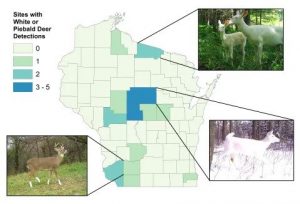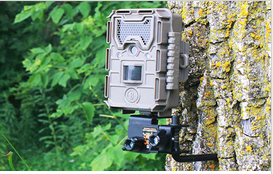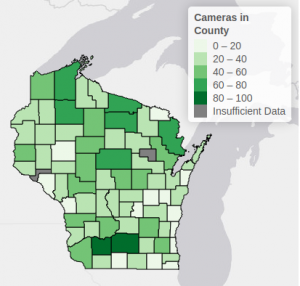
Picturing Wisconsin’s White Deer (Snapshot–2019)
February 6, 2023

2019 Snapshot Wisconsin map of white and piebald deer caught on DNR trail cams
Wisconsin has the longest history of white deer protection of any state, going back all the way to 1940. So the big question is: what is the result of that protection and does anyone really know how many white deer are in the state?
In a 2013 issue of “Our Wisconsin” magazine, an article on photographers Mike and Marshia Crowley and the Boulder Junction population of white deer states: “The condition of this herd and its dynamics remain open to speculation because no scientific study has been done.”
In the article, retired DNR deer biologist Keith McCaffery is quoted as saying, “All white deer are protected in Wisconsin for their novelty, and the DNR’s emphasis has been to manage harvestable deer in the greater herd, so that’s why no time has gone into studying them.”
Now, ten years later, there is still no comprehensive study of Wisconsin’s white deer, but a couple attempts have been made to at least get some picture of where the white deer are and their relative numbers.
Enter “Snapshot.”
Snapshot Wisconsin is a Wisconsin DNR program to monitor wildlife year-round using a network of over 2000 trail cameras hosted by volunteers across the state. Getting a “picture” of an animal population is literally what it does.
Snapshot Wisconsin started as a pilot  program in two counties in 2016 and expanded statewide in 2018. Trail photos are crowdsourced for identification through a program called Zooniverse.
program in two counties in 2016 and expanded statewide in 2018. Trail photos are crowdsourced for identification through a program called Zooniverse.
Information from the Snapshot program is used by the DNR to help make management decisions. Data and photos can also be accessed by the public and viewed as charts and graphs in a visualization platform called Data Dashboard.
Snapshot also produces an online newsletter featuring trail photos and stories.
In October 2019, an article appeared in Snapshot’s newsletter titled “Snowy Spotting: Wisconsin’s White Deer.” The article included a map showing the number of white and piebald deer that had been photographed by Snapshot cameras since the program began.
A total of 21 white or piebald (mixed brown and white) deer were recorded in 13 of Wisconsin’s 72 counties (the article says 12 counties, but the big blue shape in the middle of the map is actually two counties).
A small number of white or piebald deer were photographed in Ashland and Vilas counties at the top of the map and in Grant, Iowa, Lafayette, and Sauk counties in the southwest. Racine (far lower right) was the only county in the southeast to record a white deer.
The greatest number of “color-challenged” deer were in a cluster of counties in the center of the state: Jackson, Clark, Wood, Marathon, Portage, and Waupaca. None of the 13 counties with white deer, however, had more than five detections.

Camera density map from Snapshot Wisconsin’s Data Dashboard (2017-2021)
To understand data numbers, it is crucial to know camera numbers (more cameras=more data=more accuracy) and Dashboard provides a map to show just that (above and here).
Most counties have between 20 and 60 Snapshot cameras. The overall average is about 30 per county, although Dane and Iowa have over 80. Even at 80, these camera numbers are too small to obtain anything but a very small sampling of Wisconsin’s deer.
Unfortunately, piebald deer were included in this survey–which is not useful for white deer numbers or the legal ramifications, since piebalds can be hunted and white deer cannot. (The stylish brown deer with the white socks in the top photo is considered a piebald.)
This “Snap map” is still very interesting and gives at least a rough picture of where the state’s white deer are—or at the very least, where some of the white deer are.
Are we any closer to knowing how many white deer are in Wisconsin? No. The numbers still look pretty slim though. Fifty-nine out of 72 counties (82%) had no white deer photos at all.
Snapshot is a terrific program though and might be able to provide more information on white deer locations and numbers in the future. As more photos come in, researchers (and interested citizens) will be able to create a better picture of Wisconsin’s rarest residents.

